Idea
For smaller pictures, photos, etc. you often need a matching picture frame to the photo, the drawing etc. As a 3D printer owner, it should make sense to use CAD software to design your own picture frame and then print it out on your 3D printer.
Furthermore, the CAD design process can be a good exercise for improving your CAD-Software-Skills. In our example, an already existing picture frame made of wood in the small rectangular format approx. 140 x 140mm is used as a template:
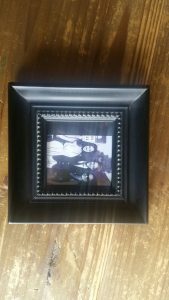
Design
Based on the existing object, the corresponding photos of the object were first taken and provided with the dimensions relevant for the design:
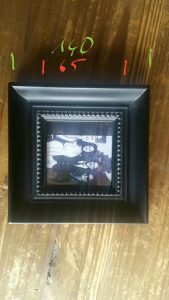
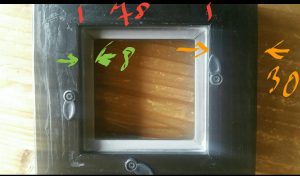
The CAD software I use is Fusion 360. The software offers really a lot of possibilities, the ability to create construction drawings based on photos of existing objects is only one among plenty of very useful features.
Photos as a template for design drawing
To do this, you import the photos as ‘Attached View Area’ into the Fusion360 design. Subsequently, the imported images must be calibrated using the appropriate function, i.e. the drawing is adjusted based on a measurement on the photo. 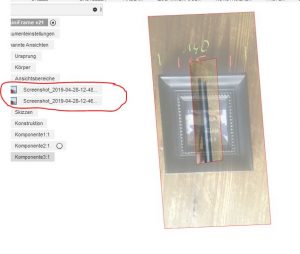
For the drawing I imported 2 images as front view and side view. After the import, the two images still have to be assigned to the respective coordinate space. Based on this, I did the corresponding construction drawing of the frame profile (cross-section of the frame element):
 The profile was initially set to 1mm in the drawing dialog of F360 in wall thickness using the offset function of F360 drawing functions. This means that the extrusion of the profile produces hollow bodies with the wall thickness set to 1mm.
The profile was initially set to 1mm in the drawing dialog of F360 in wall thickness using the offset function of F360 drawing functions. This means that the extrusion of the profile produces hollow bodies with the wall thickness set to 1mm.
Extrusion and positioning of the items
The extrusion of the profile was done as symmetrical extrusion with 30mm in each direction:
The straight piece of the frame thus created was copied in F360 by using copy & paste in the needed amount. Furthermore, two construction planes were created, which were used for the 45 ° division of the lines, ie a + 45 ° plane and a -45 ° plane. From this the corner pieces of the frame have been created:
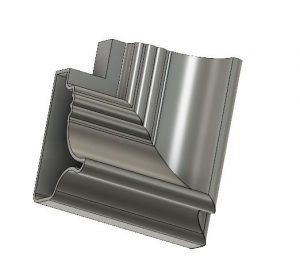 After the first straight piece and the first corner piece have been created, copies of the bodies could be made and then assembled by rotation and positioning to the appropriate positions of the completed frame of all individual bodies. By combining the single bodies, a new component was created that represents the already almost completed frame:
After the first straight piece and the first corner piece have been created, copies of the bodies could be made and then assembled by rotation and positioning to the appropriate positions of the completed frame of all individual bodies. By combining the single bodies, a new component was created that represents the already almost completed frame:
Backside of picture frame
As each hollow body was produced from the frame profile, a solution had to be created on the backside for taking the image object:
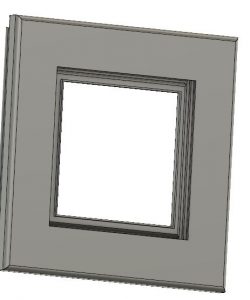 To remedy this problem, a separate body was constructed, which was then inserted into the resulting cavity:
To remedy this problem, a separate body was constructed, which was then inserted into the resulting cavity:
Ornament of the window cutout
In the cut-out window on the front of the frame a circumferential ornament should be inserted for decoration. For this purpose, a semi-spherical element was first created and positioned on the crop window:
With the help of the Fusion360 – function ‘Arrangement on Path’ , bodies can be arranged on paths in any amount and any distance. A feature that proves to be very helpful here. Thus, from the one semi-spherical element, the corresponding amount of decorations could be arranged in a rectangular arrangement on the window cutout of the front side:
Back cover and frame stand with hinge
In order for the objects applied to the back to be fixed from the back, a lid had to be constructed for the back. Furthermore, a correspondingly dimensioned frame stand should be created, which could be attached as a folding display on a corresponding hinge to the back of the picture frame. The back was extruded as a rectangular surface with a thickness of 2mm as a separate body according to the dimensions of the back cutout. 2 small holes at a distance of 7 mm were taken into account to fix the stand:
At the same plane the stand was drawn and also extruded as a separate body with a thickness of 2 mm:
For the attachment of the stand on the back I have opted for a hinged hinge, so that the stand can also be folded to save space on the frame. I have not constructed the hinge by myself but resorted to a thingiverse available part: https://www.thingiverse.com/thing:2187167
This hinge can be configured as desired using OpenSCAD according to a wide variety of criteria and then generated as an STL file. I specified the following parameters in OpenSCAD when generating the hinge:
A small hinge that can be attached to the stand and the frame back.
3D-Print of the picture frame
The printing of the frame in original size of about 157 x 157 mm should be easily possible on any standard 3D printer with the appropriate print bed dimensions. Strong attention shouldbe given to the adjustment of the support structures, due to the overhangs of the frame elements and hollow bodies a print without support structures isn’t possible. For a first draft, I’ve set the density of the support structures to 5% and the fill pattern to Triangles. This also reduces the costs for the needed filament. As print resolution, I’ve chosen 0.3mm resolution (at 0.4 mm nozzle) for a draft. The other relevant print parameters can be found in the following picture of the Cura settings:
With these settings, the 3D-print on my anycubic i3 mega in PLA grey at 80mm / s printspeed took about 5 hours 45 minutes. I found the result quite impressive for a first rough draft:
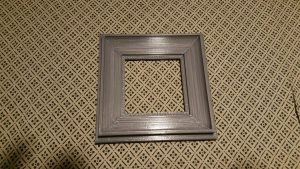
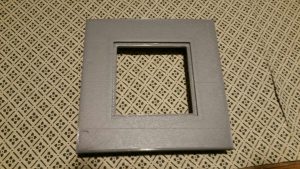
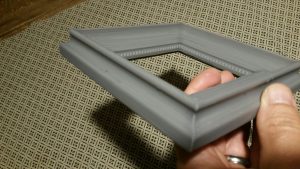
3D-Print of the other parts of the picture frame
The back and the frame stand can be printed very easily and quickly with standard settings due to the small thickness. Neither support structures nor Brim or Raft are necessary here. The print resolution does not have to be particularly high, I havehad good success with 0.3mm resolution printed at 80mm / s printspeed, both parts were printed after about 20 minutes. The small hinge should be printed in high Resolution so that it can be rotated after printing. I have made very good experiences with 0.1mm print resolution at a reduced print speed of 40mm / s. The lockplates can be printed together in the required quantity. Again, they should be printed with high resolution, since the parts are very small dimensioned. The printspeed should also be reduced accordingly. Again i have had good experience with 0.1mm print resolution and 40mm / s printspeed.
Assembly
The assembly of the printed parts can be done quickly. Place the hinge on the back cover in accordance with the pre-punched drill holes. I did not use screws here and used super glue instead. Attach the stand to the other end of the hinge (screw or glue):
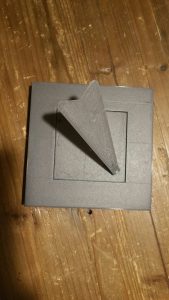
After the four cover plates are screwed on the back and the object is inserted into the frame, the finished picture frame presents itself in full beauty:
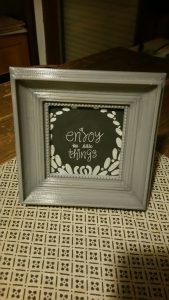
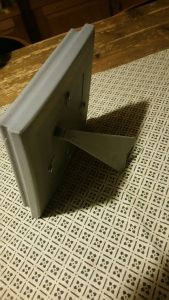
Download of the STL-Files for 3D-Print
All parts required for assembly for 3D printing (with the exception of the hinge which is available here) are freely available on thingiverse under the following link:
https://www.thingiverse.com/thing:3597522
Please note the license terms specified there. The freely available picture frame is provided with a lettering (my web address) on the backside . This lettering may not be removed or changed in accordance with the terms of the license.
If you are interested in an STL file without the lettering, this can be requested and purchased from me.
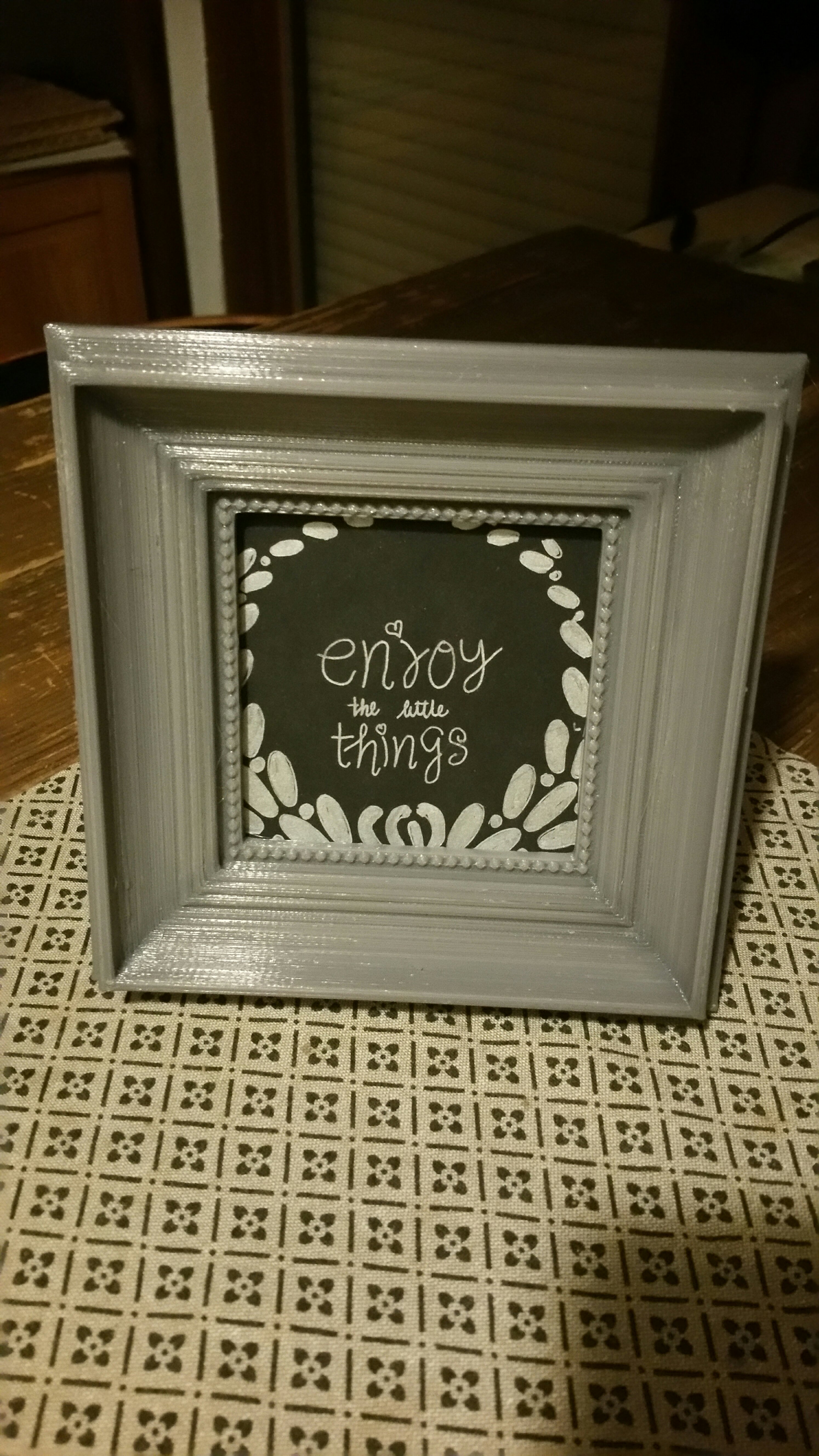
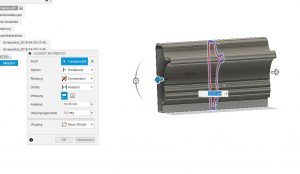
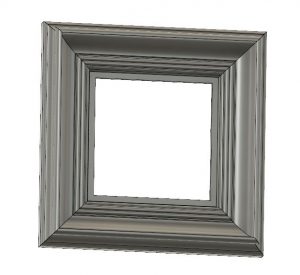


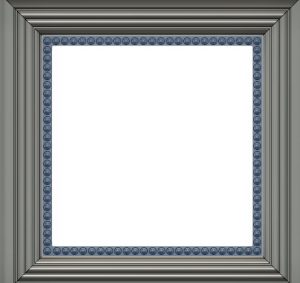
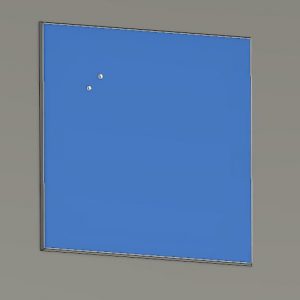
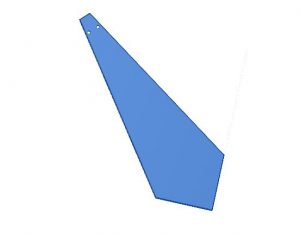
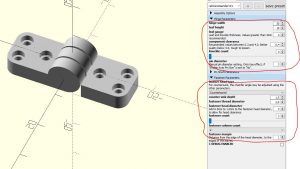


Comments